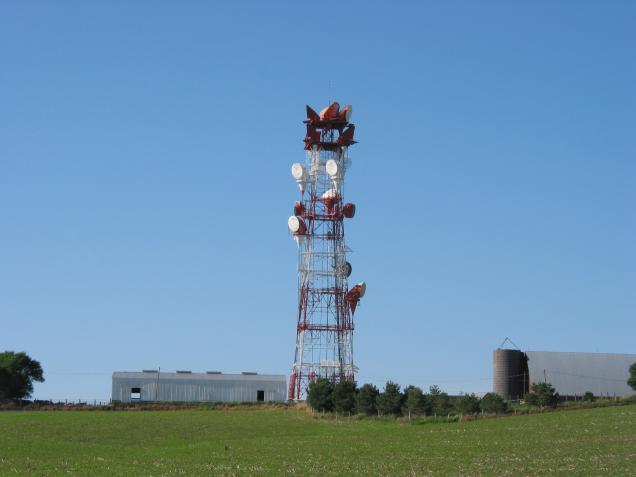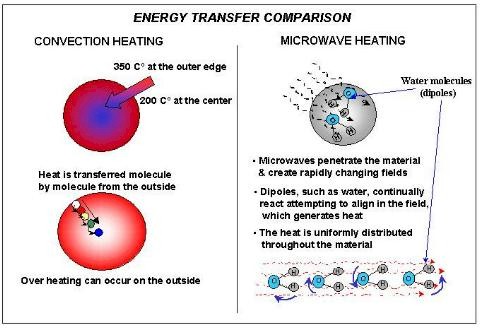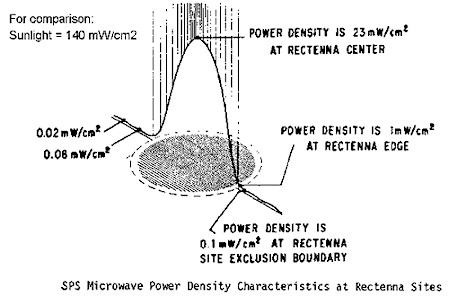|
Mainland High School
Cutting the Cord: ISTF 07-1726 |
||
|
Home
Introduction Components One Two  Product Product
Three Microwave Research W. C. Brown Generators History Phased Arrays Properties Rectennas Semiconductors Solar Satellites Superconductors Moon Research Colonization Helium-3 Fusion Geography Mining Resources Project Assessment Bibliography Glossary Team |
Microwave Properties
Microwaves are a portion of the electromagnetic spectrum ranging from 10 centimeters, 300 MHz, to 1 millimeter, 300 GHz. The boundaries between infrared and radio, on either side of microwaves, are blurry and often intermixed which explains why the history of microwaves is so inextricably intertwined with the history of short radio waves and radar.
Since the 1950s, the technology of microwaves has greatly impacted our world. Microwaves are used not only in military programs, but in communications as well as in the health-care industry and food preparation. Industrial microwave processing is usually accomplished at frequencies of 915 MHz or 2,450 MHz while research uses the ISM (industrial, scientific, and medical) bands. Radar is a vital military device that relies solely on microwaves to give us information about the speed and location of oncoming or unwanted "guests". Before the invention of fiber optic transmission, microwaves were used in the AT&T long lines during most long distance phone calls. One of the most basic appliances that functions because of microwaves are microwave ovens which work by emitting microwave radiation from magnetrons that then penetrate the food placed inside the oven, making its water molecules rotate. Since microwaves travel at the speed of light, as well as being reliable and cheap, they are commonly used in cell phone networks as well as in WiFi networks. Microwaves are transmitted to and received from cell phone towers when making a cell call which has lead people to worry about medical implications for frequent users. Environmental Impact
The environmental impact of microwave beams correlates to their frequency and power. The SPS frequency of 2.45 GHz (122.4 mm) at a peak power of 23 milliwatts/cm2 have been shown to be safe. This frequency is tuned for maximum transmission through the atmosphere. During SPS experimental trials, the reception of the microwave beams on rectennas had no serious impact on the ground around them, nor did it on the atmosphere surrounding them since the beam's intensity (power/cm2) had such a small order of magnitude. Remember that microwaves have longer wavelengths than IR-rays and therefore less energy per photon than the UV and visible radiation encountered by someone taking an afternoon walk on a sunny day. We as a society are already bathed in a blanket of microwave/radio frequencies as our wireless communication networks expand. The EPA recently researched the environmental impact of rectennas and microwave beams stating the following:
"Since there appear to be no intrinsic, mutagenic or carcinogenic effects of microwaves [below exorbitantly high levels], the problem of such effects can be dismissed for the ordinary level of exposure of human [workers] within the rectenna area of SPS (0.01 to 1.0 mW/cm2)."
The MINIX (Microwave Ionosphere Nonlinear Interaction eXperiment) rocket experiment, conducted by Japanese researchers in 1983, showed that when the ionosphere is bombarded with microwaves there is no significant heating of the ionosphere. In the experiment heating was below 100K (-173.15 degrees Celsius). At that temperature there is no plasma generated and was theorized that if microwaves were to be transmitted through the ionosphere there would be no repercussions. The environmental impact on the interaction with the atmosphere around the microwave beam have been determined to be negligible, if existing at all, by current/recent studies.
About.com - Are Cell Phones and Microwave Radiation Really Unhealthy? http://environment.about.com/od/environment/a/cell_phones.htm AT&T Long Lines - Elk Horn, IA http://long-lines.net/places-routes/ElkHornIA/ Centre for Remote Imaging, Sensing and Processing - Effects of Atmosphere http://www.crisp.nus.edu.sg/~research/tutorial/atmoseff.htm Environmental Waste International - Microwave Properties http://www.ewmc.com/Technology/Technology_microwave.html HowStuffWorks - How Cell Phones Work http://electronics.howstuffworks.com/cell-phone1.htm HowStuffWorks - How Municipal WiFi Works http://computer.howstuffworks.com/municipal-wifi.htm Permanent - Energy Interactions with the Atmosphere and at the Surface http://permanent.com/p-sps-bm.htm Radio Science Center for Space and Atmosphere - MINIX Rocket Experiment http://www.kurasc.kyoto-u.ac.jp/space-group/sps/minix-e.html RITE Brain Consulting - Microwave Radio Technology & Uses http://www.ritebrain.net/Server%20Documents/Microwave_Radio_Technology___Use_V_1.pdf Toddgraetz.com - Former AT&T Long-Lines Sites http://www.toddgraetz.com/formerat&tlong-haulsites UK Office of Communications - Some Aspects Related to the ISM Band, especially Medical http://www.ofcom.org.uk/static/archive/ra/topics/research/rrac/members/rrac01_19.doc University of Colorado - Microwaves Exert Electric Forces on Water http://www.colorado.edu/physics/2000/microwaves/water_rotates3.html URSI - Supporting Document for the URSI White Paper on Solar Power Satellite Systems http://www.ursi.org/WP/SupportingDocument1.pdf (pg 39) Western Washington Universsity - SEARUN curricular materials http://www.ac.wwu.edu/~gisele/curriculum.html |




